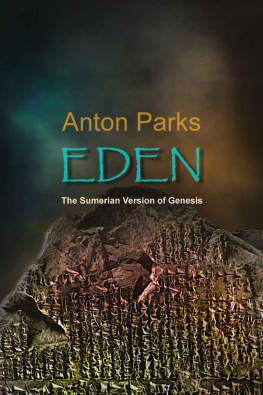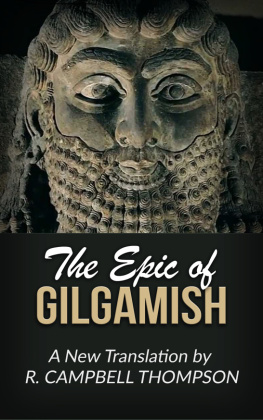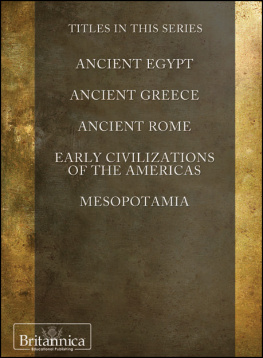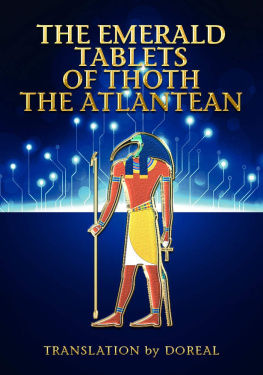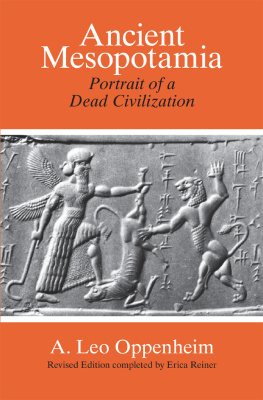All rights reserved.
Special thanks to Professor Calvin Nelson for your assistance in making this translation possible.
Introduction
The Cult of Nyarzir migrated into the regions of Mesopotamia during its prehistoric period, known to scholars as the Ubaid Period. Not much is written about this period in ancient Mesopotamian history, with the exception of the pottery found in this area, and specific burial practices have also been found at Eridu and Ur along with distinctive clay figurines of humans with lizard-like heads. These are commonly known as the Ubaid figurines.
Another interesting, often overlooked, discovery from this period in Mesopotamian history is The Ivory Tablets, often referred to as The Tablets of Destinies in the latter Sumerian period. While the recent discovery of the tablets of destinies hasnt been written about in much detail, legends surrounding the book seem to have fascinated many in the latter Sumerian period and the culture and nations that succeeded them. In Muslim mystical lore, the archange l Isra f il is owner of a "jeweled tablet of fate. Published in 1907, Folk-lore of the Holy Land: Moslem, Christian and Jewish by J. E. Hanauer observes the following concerning Islamic mysticism:
KNOW, that the very first thing which Allah created was the marvellous Tablet of Destiny upon which is written not only all that ever happened in the Past, or that will happen in the Present or the Future, but also every human being's lot for ever: whether he will be happy or wretched, rich or poor in this life; and whether he will be a true Believer and inherit Paradise hereafter, or a Kfir and go to Jehennum. The Tablet of Destiny was made out of an immense white pearl, and it has two leaves like those of a door.
Centuries earlier, The Babylonians illustrated their reverence of these so-called tablets called the Enuma Elis, as translated by L. W. King:
She hath given him the Tablets of Destiny, on his breast she laid them, saying: Thy command shall not be without avail, and the word of thy mouth shall be established. Now Kingu, thus exalted, having received the power of Anu,
It is with good reason that the Babylonians incorporated The Tablets of Destinies into their myths, as it was a symbol of the power of heaven. It seems possible that this idea was passed on to them by the Sumerians. Not only do these tablets appear in Sumerian mythology, but are spoken of in a literal sense. In one myth, written in Semitic language, Enmeduranki is said to have learned certain secrets of heaven by the gods themselves. It is written, concerning Enmeduranki, that he received the "tablet of the gods." These were the same tablets that were known as the tablets of destinies. Enmduranki was extremely significant to the Sumerians, as he was the ancestor from whom all priests of the sun God had to be able to trace descent. Based on similarities between the Sumerian King List and Biblical genealogies in Genesis, many link Enmeduranki with Enoch.
It seems that the Tablets of Destinies may have been a prehistoric grimoire to say the least. In other Sumerian mythologies the Tablets have been described as being stolen, or obtained through battle. These same tablets appear prominently in the history of The Cult of Nyarzir. Having influenced the later cults that succeed them, like the Sumerians, they often described in the writings the Nine Books of Dreams, which can only be received from heaven.
Historical records reveal little about this cult who accredited their knowledge to the Ninzuwu, a race of beings that shared a mystical technology with early man. Interestingly, we find in their writings a story of a magician named Xuz, which is almost identical to that of Enmeduranki. Are these two historical figures really the same person? Maybe.
Although, the Cult of Nyarzir were highly-advanced, and possibly the gods of the Sumerians, who would arrive centuries later, they were also a nomadic people and established several schools of esoteric knowledge throughout the world.
Due to constant migration very little is available on The Cult of Nyarzir, save The Ivory Tablets of the Crow . Different than other ancient mystical schools, The Cult of Nyarzir s primary focus was not the worship and preservation of one specific deity, or a pantheon of deities, but a process of transformation that would create a divine quality within the initiate. The idea that magicians of ancient times would become the gods of those who later succeeded them is in agreement with modern scholars. In 1911s edition of the Encyclopedia Britannica; A Dictionary of Arts, Sciences, Volume 2, by Hugh Chisholm, page 55 states:
in Australia it cannot even be asserted that the gods are not spirits at all, much less that they are spirits of dead men; they are simply magnified magicians, super-men who have never died
The Ivory Tablets of the Crow was composed by Jbir ibn Hayyn, who acquired the manuscript while visiting the ruins of ancient Mesopotamia. The alchemists experimentation with the text caused many wondrous things to occur, which would inspire him to write Kitab al-Kimya.
In 1444, The Ivory Tablets of the Crow was translated into Latin by Robert of Chester, but not published. It was acquired by Hildegard of Bingen through her association with a merchant that remained nameless in her journals.
In 1493, Johann Reuchlin is cited to have peered into the contents of The Ivory Tablets of the Crow, in the journals of Jakob ben Jehiel Loans.
In 1556, John Dee mentioned The Ivory Tablets of The Crow in his proposal to Queen Mary for a national English library.
In 1818, Marie Laveau, purchased a copy of The Ivory Tablets of the Crow in Paris, France. The manuscript was given to one her students known only by the alias Magic John.
In 1901, Austin Osman Spare acquires a copy of the text and begins experimentation.
In 1994, Amaya Taoka begins the initiatory process by a group of Hoodoo practitioners seeking to resurrect the cult associated with The Ivory Tablets of the Crow.
While the knowledge of this text remained hidden by those who owned copies of the manuscript, little mention is made of its association with the Sumerian Tablets of Destiny.
Editors Notes on the Manuscript
According to Jbir ibn Hayyn, the Cult of Nyarzir inscribed the knowledge of their mystical tradition on fifteen tablets of ivory that they called The Crow. The Ivory Tablets describe what seems to be an initiatory journey into what is known today as pure consciousness. Obtainment of this divine state required that one hold intercourse with several dark stars, or what the mystics of Nyarzir called crows.
The text begins with the tablet entitled, The Birth of the Crow , which is a personified-stellar epic that illustrates how our native star, the Sun, came into being. Strangely enough, the Cult of Nyarzir referred to our Sun as a goddess and in their initiatory rites used it as some sort of mirror that reflected the inner crow of the initiate. This seems to indicate that the Nyarzirians held intimacy not with the literal Sun in the sky, but a dark star that existed behind the literal Sun.
The next tablet is entitled The Nine Books of Dreams , wherein nine glyphs of what is known as the Vasuh script are given. These characters represented shadow chakras, which allowed one to access a universe of dark matter when put into certain formula. The Editor would like to advise the reader that these glyphs greatly resemble characters from the Mandaic alphabet, which seems to be the source of some of the symbols appearing in the Simon version of the Necronomicon. Interestingly, the Editor, and several other members of an occult group, worked with the Vasuh characters, in what was called the Asaru Lessons. Little did members of this group know that the origin of these glyphs came from the Ivory Tablets, which the Editor had been working on for over seven years. The experimentation with the Vasuh glyphs, resulted in the occurrence of strange phenomena and certain heightened states of awareness. Fortunately, we now understand how these glyphs were in Nyarzirian Mysteries.




